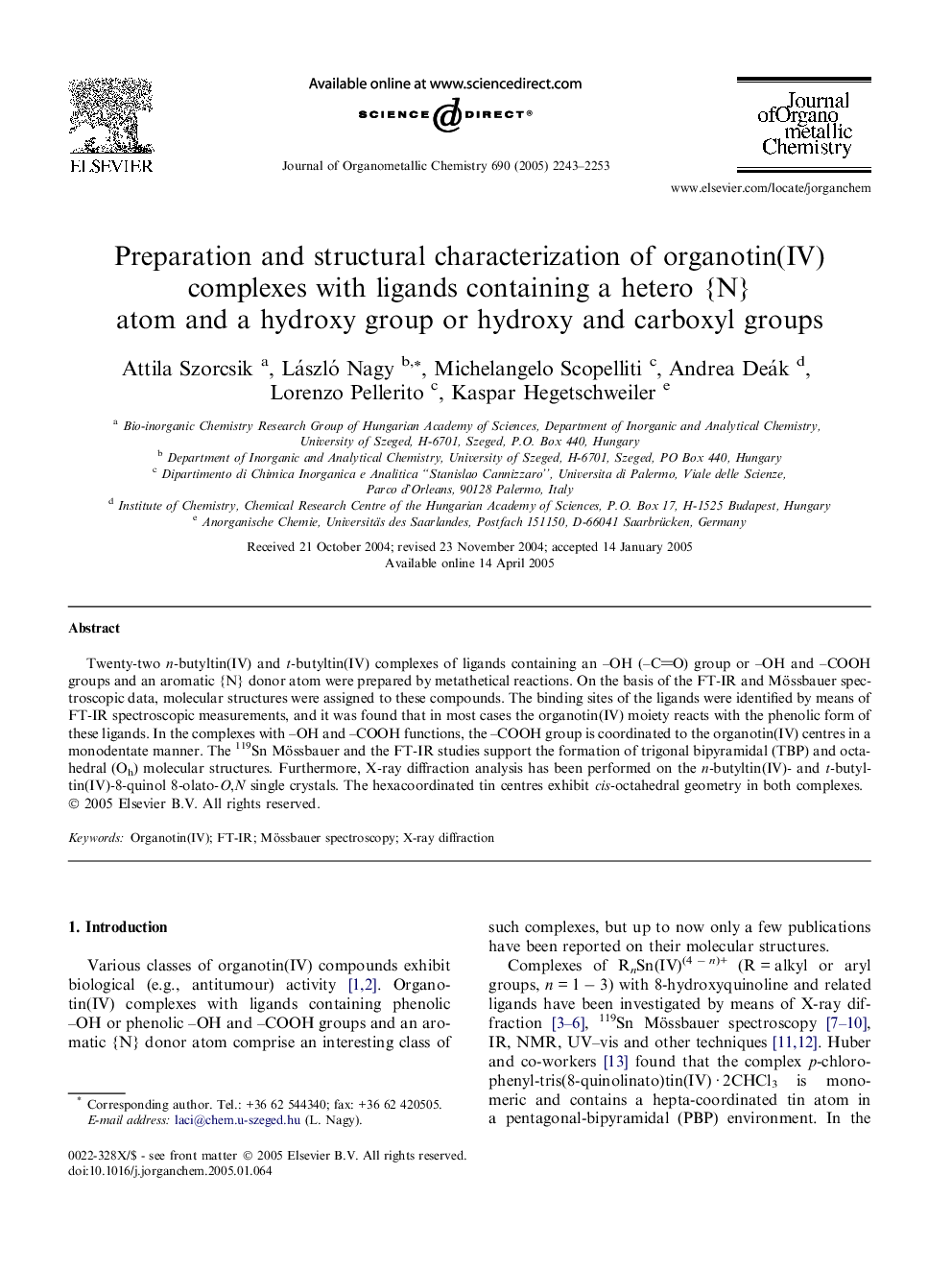| کد مقاله | کد نشریه | سال انتشار | مقاله انگلیسی | نسخه تمام متن |
|---|---|---|---|---|
| 1327922 | 977517 | 2005 | 11 صفحه PDF | دانلود رایگان |

Twenty-two n-butyltin(IV) and t-butyltin(IV) complexes of ligands containing an –OH (–CO) group or –OH and –COOH groups and an aromatic {N} donor atom were prepared by metathetical reactions. On the basis of the FT-IR and Mössbauer spectroscopic data, molecular structures were assigned to these compounds. The binding sites of the ligands were identified by means of FT-IR spectroscopic measurements, and it was found that in most cases the organotin(IV) moiety reacts with the phenolic form of these ligands. In the complexes with –OH and –COOH functions, the –COOH group is coordinated to the organotin(IV) centres in a monodentate manner. The 119Sn Mössbauer and the FT-IR studies support the formation of trigonal bipyramidal (TBP) and octahedral (Oh) molecular structures. Furthermore, X-ray diffraction analysis has been performed on the n-butyltin(IV)- and t-butyltin(IV)-8-quinol 8-olato-O,N single crystals. The hexacoordinated tin centres exhibit cis-octahedral geometry in both complexes.
nBu2Sn(IV)2+ and tBu2Sn(IV)2+ complexes of –OH, or –OH and –COOH group(s) and aromatic {N} donor atom containing ligands were prepared by metathetical reactions. These complexes were characterized by FT-IR and Mössbauer spectroscopic methods. The single crystal X-ray diffraction analysis of di-n-butyl and di-tert-butyl-bis(quinolin-8-olato-O,N)-tin(IV) complexes showed that the tin centres are in cis-octahedral environment. The experimental 119Sn Mössbauer nuclear quadrupole splittings, (Δ) – according to the point charge model formalism – support the formation of trigonal bipyramidal (TBP) or octahedral (Oh) molecular structures.Figure optionsDownload as PowerPoint slide
Journal: Journal of Organometallic Chemistry - Volume 690, Issue 9, 29 April 2005, Pages 2243–2253